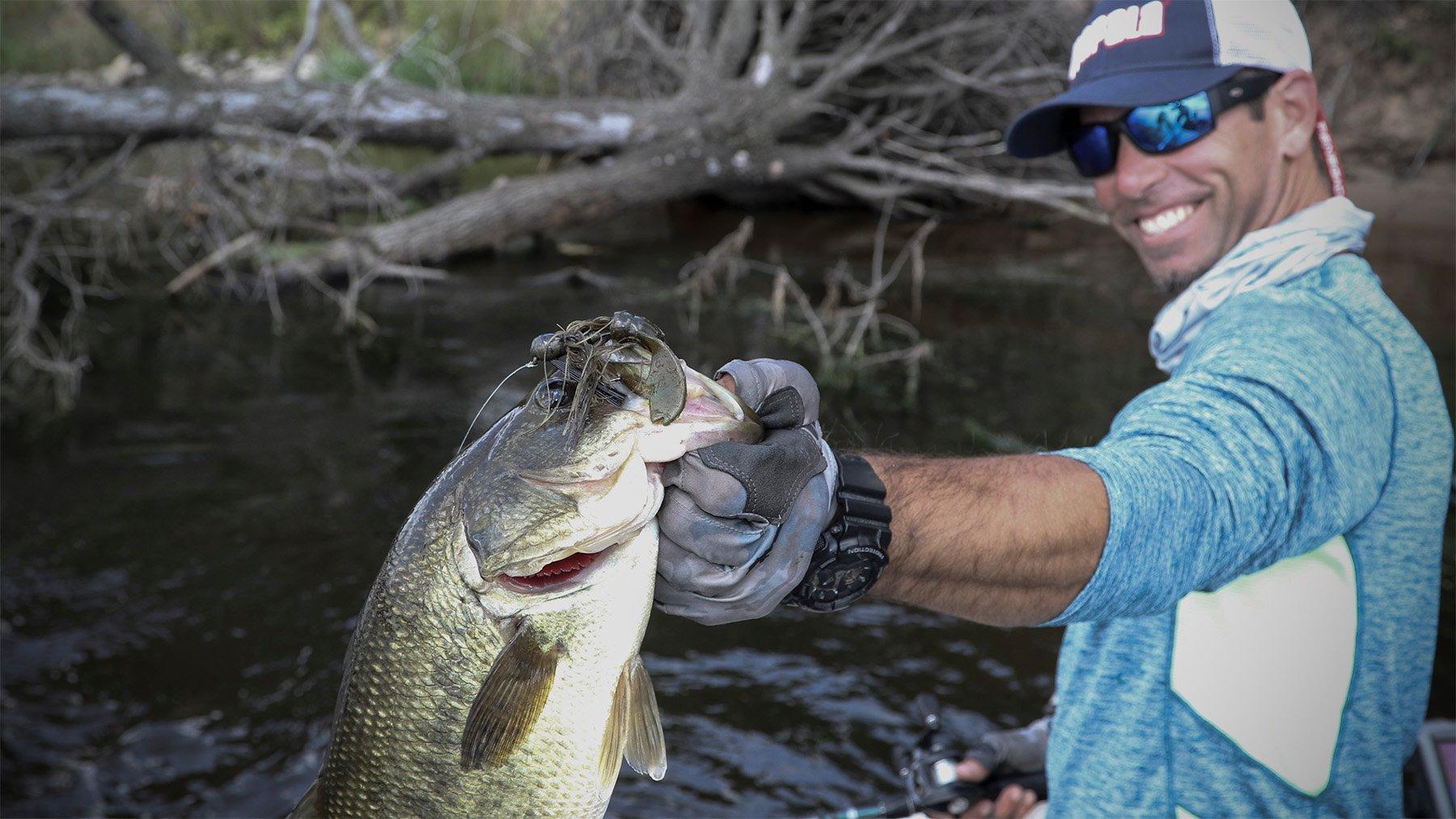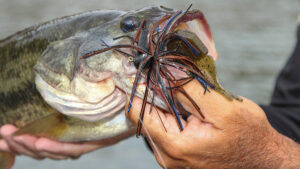Skirted bass jigs earned their place as big-fish baits with a with a wide range of applications from flipping/pitching to stroking and swimming. When you fish a jig, however, the modifying jig skirts can be the hot ticket to the most bites.
It’s as much about form as it is function, and Bassmaster Elite pro Mike Iaconelli suggests a holistic approach to striking the right balance.
The key factors for jig skirt decisions comprise 3 simple considerations
- color
- length
- thickness
Match their meals
Bass are not complicated creatures. Sometimes conditions — cold fronts, tides, etc. — deepen the calculations, but at the end of the day, appetite drives a whole lot of their decisions.
“When it comes to jig color, I think of one thing — forage,” Iaconelli said. “If you look at my jig box, everything in there is designed to mimic something natural in the environment.
“If it’s shad, I want white; if it’s bluegill, I want the greens and watermelon; if it’s crawfish, I want the browns.”
Indeed, the K.I.S.S. approach works well for ideal scenarios, but when bass are picky — heavy fishing pressure, weather changes, abundant forage — getting specific with jig skirt colors can make a big difference. A few strands of orange or purple, maybe something with a banded look — it doesn’t take much to alter a skirt for advanced impersonation.
Find their prey
“Every now and then, take a peak in your live well or down a fish’s throat for signs of crawfish,” said pro Stephen Browning. “There are several different shades of crawfish with any given area, so if you take a pair of pliers and pull a crawfish out of a fish’s gullet when you see those antennae, you can go back into your tackle box to mix and match a few skirt color variations to try to pinpoint that particular color.
“The same goes for bluegill or sunfish — there are a lot of color variations and if you can get a sense of what that fish is eating, it will help you match the hatch. That’s a key deal to getting those extra bites; and especially those quality bites.”
Accent the belly
When legendary flip master Denny Brauer fits his jig with a skirt bearing a strip of accent colors, he’ll make sure those eye-catching strands align with the jig’s hook shank.
“The accent color is always a lighter or brighter shade than the main skirt,” Brauer said. “Everything that swims in the water has a lighter colored bottom, or belly.
“Aligning the accent colors with the hook shank makes the jig look more natural.”
Take the skirt to the chop shop
Nothing wrong with a full jig skirt, but trimmed-down versions also have their place in the playbook. Iaconelli bases his selection on two factors:
- Food sources
- Fall rate
“If you’re in a place with big forage like tilapia, use a full length skirt. In a place with little tiny bluegill, I want to trim that skirt down. While, the longer and bigger the jig skirt, the slower the rate of fall. The shorter the jig skirt, the quicker the fall rate and the more likely it is to get a reaction strike.”
Jason Christie, the Elite pro from Oklahoma, likens skirt trimming to hair cuts. It’s all about precision, so a consistent trim starts with a measured grip.
“I’ll hold the skirt between my first two fingers (forefinger and middle) like a barber holds holds your hair when he trims it,” Christie said. “I’ll keep it nice and even so I can cut right above my fingers and keep all those strands the same length.”
For a flaring look, Christie holds the jig by its head, so the skirt dangles freely, and then he trims each side at an upward angle.
Lose the Gut
While weight-conscious anglers invest significant planning and effort into maintaining diet and exercise goals, slimming a jig’s profile is far less complicated. The key is understanding when and why this may be appropriate.
“In cold water, I want a bulkier, thicker skirt,” Iaconelli said. “In many scenarios, I’m even going to use a skirt with Living Rubber because I want a slower fall, a bigger profile in that colder water.
“In warmer water, when I want to make a fish react, I actually want a thin skirt. Along with trimming down the skirt to right behind the bend of the hook, I’ll actually pull strands of skirt material right out of that band. A lot of times, I’ll remove up to 30 percent of that skirt material to increase the rate of fall.
Brauer, who follows a similar preparation regimen, offers this handy tip for quickly recognizing which jigs are ready for action: “Once I’ve finished preparing my jig, the last thing I do is cut the top edge of my weed guard at a 45-degree angle toward the hook point.
“This doesn’t affect the weed guard’s ability to protect the hook point, but it allows me to instantly identify which jigs in my box I’ve prepared.”
MORE TOPICS ON BASS JIG SKIRTS:
- Tips for Making and Modifying Jig Skirts with Gary Klein
- Five Custom Jig Skirts to Make at Home with Jason Sealock
- Add a Unique Skirt Flare for Bass Jigs















